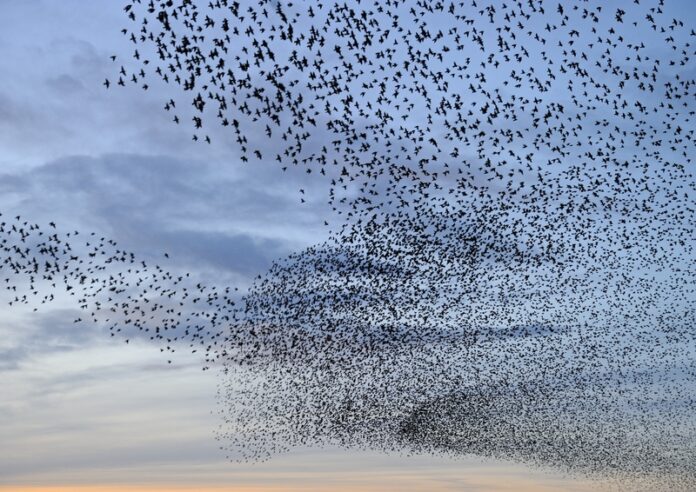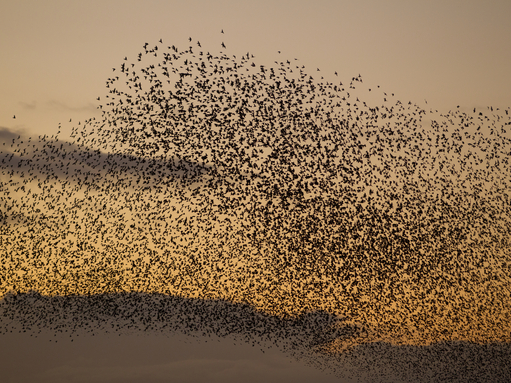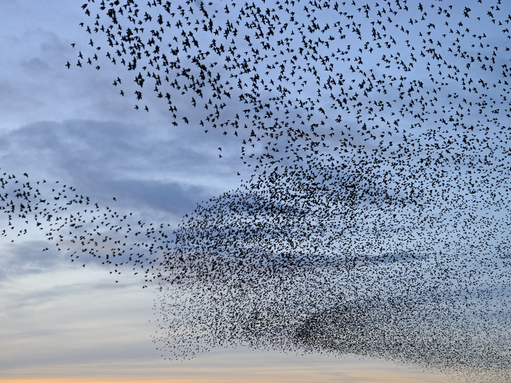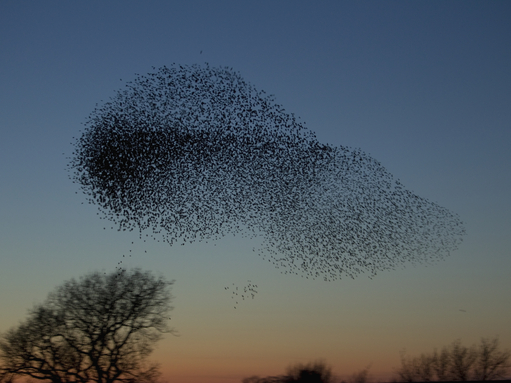Winter brings with it one of nature’s true spectacles: starling murmurations. But what are they, and why do these hypnotic gatherings form?
What is a murmuration of starlings?
Murmurations are huge groups of starlings that twist, turn, swoop and swirl across the sky in beautiful shape-shifting clouds.
Just before dusk, small groups of starlings from the same area come together above a communal roosting site. The group grows ever larger, moving in unison in an aerial dance that casts gorgeous shapes against the waning daylight.
Why do starling murmurations form?
Starlings are known as ‘partial migrants’: birds that migrate in some places but not in others. Our own starlings tend to stay put while those from colder countries in eastern Europe head to our shores, swelling our numbers during autumn and winter to form seriously impressive flocks.
Scientists believe that murmurations offer safety in numbers; protection from predators like peregrine falcons that are attracted by the sheer number of birds. After all, it can’t be easy to single out just one starling from a whirling group of hundreds or even thousands! Experts still aren’t completely sure how each starling knows which way to turn without bumping into the others.
Murmurations always form over the birds’ communal roosting site. As the number of starlings reaches its peak and the last of the daylight begins to fade, an unspoken signal seems to tell the group to funnel towards the ground with one last sweeping motion and calming whoosh of wings. Roosts can be anything from a reedbed to a seaside pier where the group can huddle together for warmth and chatter about the best feeding grounds.
When is the best time to see a starling murmuration?
These starling spectaculars form during autumn and winter. Most migrant starlings have usually arrived here by late November/early December, making this the prime time to watch a murmuration at its peak. Wrap up warm and make sure you arrive before dusk to watch the big event from start to finish.
Source:
https://www.lancswt.org.uk/about-us
If you like our content please keep us going for as little as £2 a month https://dorseteye.com/donate/










